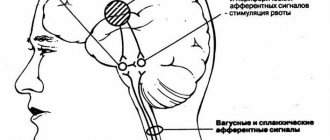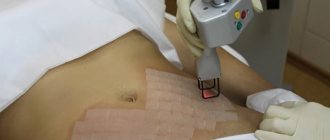Doctors Cost
Price list Doctors clinic
Anemia is a whole category of syndromes characterized by a decrease in hemoglobin concentration and the number of red blood cells. This condition is diagnosed only by the results of laboratory tests; it is impossible to determine the disease by eye. Symptoms of anemia in adults can vary greatly. Therefore, the direction of treatment depends on the general state of health, the causes of the disease, age and gender, and concomitant pathologies.
Anemia - what is it and how dangerous is it?
This disease is also called anemia. This is a clinical-hematological syndrome that can occur as a consequence of one or another pathology. Hemoglobin protein is synthesized in the bone marrow with the participation of iron and is a component of erythrocytes - red blood cells. It delivers oxygen to the tissues and also helps to utilize carbon dioxide, delivering it to the lungs.
Such an important function easily explains the dangerous consequences of anemia. Firstly, even in conditions of a lack of iron in the diet, the body will fight anemia with all its might: first there will not be enough iron in the tissues and organs, and only lastly in the blood. This means that anemia often accompanies serious bone marrow diseases, tumors, and severe hematological diseases. It is important to pay attention to anemia as early as possible for this reason.
Secondly, a decrease in hemoglobin levels can lead to the following consequences:
- weakening of protective forces and increased susceptibility to aggressive environmental factors;
- decreased physical endurance and tolerance to intellectual stress;
- high risks of developing heart disease;
- high risks of developing purulent-septic processes.
Pregnant women deserve special attention. Anemia during pregnancy can lead to a high probability of spontaneous abortion, fetal malnutrition and intrauterine growth retardation, the appearance of hypoxia, and discoordination of labor. Physiological blood loss during childbirth or during a cesarean section will not cause complications in a healthy woman, but in an expectant mother with anemia it can also cause serious consequences.
Possible complications
In some cases, anemia can cause complications, among which the most common are low blood pressure, weakening of the immune system, the occurrence of infectious diseases, and deterioration in the physical and intellectual development of children. Anemia during pregnancy can cause fetal hypoxia, intrauterine growth retardation, and premature birth.
In addition to general complications, specific ones are also known. Hemolytic anemia provokes hemosiderosis, cholelithiasis, and hemolytic crisis. Massive acute blood loss can cause multiple organ (cardiovascular, respiratory, renal) failure, DIC syndrome (impaired hemostasis). If hematopoiesis is impaired, diabetes mellitus, cirrhosis, and adrenal insufficiency may develop. A lack of vitamin B12 can cause damage to the spinal cord.
Symptoms of anemia
Symptoms of anemia and treatment options may vary in patients of different age groups, gender, and general health. The most characteristic signs are the following:
- pallor of the skin (from white to yellowish) and mucous membranes;
- hair loss (not patchy baldness, but uniform hair loss);
- brittle nails, changes in the structure of the nail plate, suddenly appearing white spots on the nails;
- change in taste sensations, burning sensation on the tongue;
- cracks in the corners of the mouth;
- menstrual cycle disorders in women;
- decreased physical activity, resistance to physical activity;
- muscle weakness;
- increased drowsiness;
- rapid mood changes, irritability;
- dizziness, periodic headaches, less often fainting;
- ringing in the ears, darkening or spots in the eyes;
- unusual gastronomic preferences, for example, the desire to taste paints, soil, chalk, etc.;
- pain behind the sternum, usually in the heart area.
In each specific case, not all of the listed symptoms may be observed. Sometimes anemia is discovered by chance, during the diagnosis of general health, when the patient came to the doctor for another reason. Thus, frequent respiratory diseases are a common consequence of anemia, and consulting a doctor allows you to identify the true causes of constant ailments.
Anemia: symptoms, treatment, prevention
Probably no one likes feeling lethargic, tired and overwhelmed. It’s one thing when such a condition appears periodically - after a hard day at work, severe stress, or after an illness. And it’s completely different when the state of “brokenness” becomes permanent: fatigue and weakness do not go away even after proper rest. And suddenly the skin becomes pale, the hands and feet are constantly freezing, the heart jumps out of the chest, the hair falls out and there is a ringing in the ears. This is a reason to sound the alarm and consult a doctor, since there can be a great many reasons for this condition. We will talk about one of them in our article. Today we will talk about anemia. What kind of disease is this? How dangerous is she? How to treat and prevent anemia? These, and more, questions will be answered by the therapist at the SMITRA Clinic, a doctor with more than 30 years of experience, Svetlana Aleksandrovna Marchenko.
What is anemia?
Erythrocytes (red blood cells) contain a complex protein - hemoglobin
, which is synthesized by the bone marrow with the help of iron. Its main function is to carry oxygen throughout the body: after delivering oxygen to the tissues, hemoglobin picks up carbon dioxide and delivers it to the lungs.
Anemia (or anemia)
is a condition in which there is a decrease in the amount of hemoglobin, sometimes with a decrease in the number of red blood cells. Because of this, the transfer of oxygen to tissues deteriorates and hypoxia occurs, i.e. oxygen starvation of tissues.
Causes and types of anemia
Anemia can be either an independent disease or a symptom or manifestation of a complication of another disease or syndrome.
Among the main causes of anemia are the following: 1.
Anemia that occurs when blood formation is impaired
.
These are, first of all, iron deficiency anemia (occurs due to a lack of iron in the body), anemia of pregnant and lactating women (during pregnancy and lactation, the volume of circulating blood in a woman’s body increases, which leads to its “dilution” and a drop in the proportion of hemoglobin in the total blood volume) . 2. Iron-saturated anemia
.
With such anemia, iron in erythrocytes is contained in sufficient quantities, but for various reasons cannot be used by the bone marrow for the synthesis of hemoglobin. Iron-saturated anemias include B-12 deficiency anemia, cancer anemia, helminthic anemia; anemia that occurs during infections. Anemia may occur when exposed to chemical reagents, radiation, medications, as well as due to immune disorders, gastritis, and enteropathies. 3. Anemia that occurs with increased blood destruction (hemolytic).
With this type of anemia, the lifespan of red blood cells is significantly shortened.
Hemolytic anemia can be either hereditary or acquired. In the hereditary form, the problem lies in genetic abnormalities in the structure or function of red blood cells. Acquired hemolytic anemia develops due to excessive destruction of red blood cells due to exposure to antibodies, toxins and other factors. 4. Anemia that occurs during acute or chronic blood loss.
Severe acute or chronic bleeding depletes the body's iron stores, leading to anemia.
Different forms of the disease differ in symptoms and complications. Without adequate treatment, anemia can be complicated by pathology of the cardiovascular system, premature birth, or even death.
What is the danger of long-term anemia?
As we said above, anemia leads to hypoxia - oxygen starvation of tissues. Therefore, even with a mild course, long-term anemia can cause serious harm to health. Prolonged hypoxia leads to metabolic disorders, accumulation of toxic metabolic products, and excessive load on the life-support organs - heart, lungs, liver, kidneys, brain. Against the background of chronic anemia, any acute disease - sore throat, viral infection, etc. – are much more severe and more difficult to treat.
Symptoms of anemia
Each type of anemia has its own manifestations, but a number of general signs of anemia can still be identified:
- weakness;
- noise in ears;
- dizziness;
- dyspnea;
- darkening of the eyes;
- heartbeat;
- decreased appetite;
- difficulty swallowing;
- pallor and dryness of the skin, as well as visible mucous membranes;
- hair loss;
- fragility, “striations” of the nails, sometimes their spoon-shaped concavity;
- cracks in the corners of the mouth;
- decreased blood pressure;
- from the gastrointestinal tract, glossitis (inflammation of the tissues of the tongue), atrophy of the mucous membranes of the esophagus, atrophic gastritis, pain in the left hypochondrium are noted.
Iron deficiency anemia is characterized by a perversion of taste (addiction to chalk, lime, coal, earth, tooth powder, ice). Hemolytic anemia can be manifested by yellowness of the skin and sclera, enlargement of the liver and spleen, dark urine and feces.
As we can see, the manifestations of anemia can be completely diverse. Therefore, if your health worsens or if the symptoms described above or any other symptoms appear, we recommend that you immediately consult a doctor.
How to diagnose anemia?
Laboratory tests help diagnose the disease, because it is impossible to determine the disease by eye.
Only correct diagnosis will help choose the right tactics for further treatment and, accordingly, guarantee a successful outcome for the patient. If you suspect one or another type of anemia, your doctor will definitely prescribe blood tests: general and biochemical. Changes in indicators (hemoglobin, iron, red blood cells, ESR, vitamin B12, etc.) will not only answer the question: is there anemia, but will also help the doctor choose the appropriate treatment path.
In some cases, laboratory blood tests alone are not enough, so the patient is prescribed a myelogram - a bone marrow test. A myelogram helps in the differential diagnosis of blood diseases.
Also, the doctor will definitely advise you to conduct a stool test for occult blood, stool for worm eggs and protozoa, caprogram, and, if necessary, stool for calprotectin (a specific marker of intestinal inflammation).
To exclude acute and chronic blood loss, fibrogastroduodenoscopy (FGDS) and colonoscopy are performed; if these procedures are impossible, irrigoscopy is prescribed. Consultation with a proctologist, ultrasound of the abdominal organs and kidneys are also indicated. Women are recommended to consult a gynecologist.
At the initial stages, anemia is treated by a general practitioner. Then, if necessary, the patient can be referred to a hematologist - a specialist who deals with the prevention, diagnosis and treatment of blood and hematopoietic organs.
Treatment of anemia
There are a huge number of types of anemia.
And they are all treated differently. That is why when treating an illness it is so important to take into account the cause that caused it. In case of bleeding, this is, first of all, the fight against bleeding; for inflammatory diseases - antibiotics, hormones; for chronic renal failure - hemodialysis; for iron deficiency anemia - iron supplements, sometimes even blood transfusions; for B12-deficiency anemia - injections of vitamin B12; if there is a lack of vitamin B9 (folic acid), use folic acid supplements. Treatment of any anemia can only be prescribed by a qualified doctor after a thorough examination!
Otherwise, all attempts to independently increase hemoglobin will be ineffective, in vain, or even dangerous.
Is it possible to treat anemia with folk remedies?
To treat anemia, first of all, you need to contact a specialist and receive a course of drug therapy.
Folk remedies can be used as auxiliaries when undergoing the main course of treatment prescribed by the doctor. For example, rose hips contain a huge amount of vitamins and other useful substances - iron, copper, magnesium. Rosehip decoctions and infusions are useful for iron deficiency anemia. Garlic is also an effective aid for anemia, and if you don’t want to eat it because of the smell, you can take garlic infusion.
Folk remedies cannot be the main treatment for anemia! If you suspect a disease, be sure to consult a doctor!
Nutrition for anemia
Pay close attention to the foods in your daily diet.
Do they have enough iron? To prevent a deficiency of this important element in the body, it is necessary to eat foods rich in iron. Both animal and plant products are rich in iron. Animal iron is found in meat, organ meats, poultry and fish. Moreover, the darker the meat, the more iron it contains. This type is absorbed most efficiently (from 15 to 30%). Among plant products, the richest in iron are legumes, spinach, apples, cereals, nuts, and dried fruits. Iron from plant foods is absorbed less efficiently by the body. To improve the absorption of iron from plant foods, they should be taken with foods rich in vitamin C (citrus fruits, greens, tomatoes, bell peppers, rose hips, cabbage). Folic acid also goes well with iron. It can be found in grain bread, corn, avocado, rice, oatmeal, barley, and pearl barley. It is not recommended to simultaneously consume foods rich in iron and calcium (for example, buckwheat with milk), since these two elements make it difficult to absorb each other. In addition, it is not recommended to drink tea and coffee with foods rich in iron. The tannin contained in drinks prevents iron from being absorbed.
When trying to boost your iron levels through food, don't overdo it! Large amounts of iron-rich foods can lead to an increase in iron levels, which can lead to new problems.
Anemia is a common and serious disease that should not be left to chance. In order to avoid the development of anemia and other diseases, it is necessary to undergo an annual preventive examination: take a general blood and urine test, feces for occult blood, undergo fluorography, visit a therapist, urologist, dentist for women - a gynecologist.
If there are signs of chronic bleeding and inflammation, as well as any symptoms of anemia, consult a doctor immediately! The therapist will prescribe the necessary examination and, based on its results, adequate treatment, which will help you return to a healthy, fulfilling life as soon as possible!
Be healthy!
The material was prepared with the participation of the physician-therapist of the SMITRA Clinic, Svetlana Aleksandrovna Marchenko.
© 2010-2021 SMITRA. All rights reserved. No material on this site may be copied or used without written permission except for private, non-commercial viewing.
Differences between anemia in adults and children
According to WHO, about 2 billion people in the world suffer from anemia. The majority are children of different ages. Almost half of them are preschoolers, and a little more than a quarter are young school-age patients. And in adults, the disease occurs quite often. This syndrome is dangerous for both children and adults, and in adults the treatment period is somewhat longer.
Anemia in children may be associated with a specific cause: periods of rapid growth. The mechanisms of hematopoiesis are still imperfect, and the growth spurt requires an increased amount of nutrients. This may be associated with a temporary decrease in hemoglobin levels in the blood. However, this is still not a variant of the norm, but a syndrome that deserves close attention from a doctor. Anemia can lead to decreased defenses, poor weight gain, loss of appetite, weakness, and tearfulness. Timely methods of diagnosing and treating anemia will allow you to correct the condition and prevent complications.
The most dangerous complication of iron deficiency anemia (IDA) in adults is hypoxic coma. With high blood loss, it can cause death. Therefore, it is important to consult a doctor in time.
Features of anemia during pregnancy
The reasons for the development of iron deficiency anemia in women are considered to be periods of heavy menstruation, as well as the processes of pregnancy and childbirth. However, iron deficiency does not always occur during pregnancy; there are special preconditions for this:
- chronic anemia in women;
- diseases of internal organs;
- frequent pregnancies and childbirths;
- carrying twins or triplets;
- acute toxicosis or malnutrition.
Iron deficiency anemia in pregnant women is expressed by symptoms that can easily be confused with toxicosis and only with severe deficiency do the signs become obvious.
In case of an asymptomatic course of the disease, a blood test will help identify anemia, and in severe stages its symptoms are: dizziness, shortness of breath, pale and dry skin, changes in taste and hair loss. Anemia does not always go away on its own after childbirth; it often has to be treated during pregnancy. Treatment for a pregnant woman is prescribed by a doctor, taking into account the reasons for the deficiency. Women are prescribed a course of ferrous iron supplements in combination with folic acid.
Why does anemia occur?
Anemia can be caused by many factors. There is often a combination of causes that quickly lead to blood disorders. The most common factors for the development of anemia:
- diet features. This is the most insidious reason. The lack of food rich in iron and B vitamins may not be taken seriously by a person. This is observed with a meager diet in women trying to lose extra pounds, the need to follow a certain table for gastrointestinal diseases, etc.;
- dysfunction of the digestive system. Even a complete diet does not guarantee the absence of anemia if iron cannot be absorbed in full due to gastrointestinal diseases. Iron absorption occurs in the stomach and upper small intestine. Diseases of these organs can lead to disruption of the process and the development of IDA;
- diseases leading to disruption of red blood cell production in the bone marrow. Such diseases include pathologies of the kidneys and endocrine system, protein depletion, chronic infections, cancerous tumors;
- hemolysis. This is a condition in which red blood cells are destroyed prematurely. Normally, physiological hemolysis occurs no earlier than after 120 days—that’s how long the red blood cell “lives.” In pathological conditions, the lifespan of red blood cells decreases, causing anemia. This may be due to long-term drug therapy, infectious diseases, rheumatism, systemic diseases (scleroderma, etc.), kidney diseases, etc.;
- chronic blood loss. Blood loss is a common cause of anemia. These include heavy menstruation in women or a short (21 days or less) menstrual cycle, frequent nosebleeds or bleeding gums, gastrointestinal bleeding, non-healing wounds in people with diabetes, previous surgeries, childbirth, etc.
Anemia is always the result of an underlying disorder, so it is important to get accurate information about the causes. It is not recommended to engage in self-diagnosis and self-medication. Taking iron supplements can correct the condition, but will not get rid of the underlying disease, so it will not be fully effective and there is a high probability of relapse.
The approach to treating anemia depends on what causes the disease. Thus, secondary causes of the development of the syndrome include:
- refusal of protein foods, fasting due to life circumstances or beliefs. If a person is forced or prefers to give up food of animal origin and does not find a replacement for it in terms of iron content, deficiency and associated anemia develop;
- pregnancy. Hormonal changes, an increased need for vitamins and microelements can cause deficiency, including iron; anemia in pregnant women develops quite often. It is important to regularly visit an obstetrician-gynecologist and get tested on time so as not to miss possible violations;
- blood donation. Although blood donation is carried out taking into account safe blood loss, the risks of developing anemia increase. You should consult your doctor if you are acting as a donor;
- professional sports or increased physical activity. This is due to the fact that muscles require increased amounts of iron. The peculiarity of this cause is that anemia occurs in an erased form, because usually an athlete leads an active and healthy lifestyle. It is important to pay attention to fatigue, intolerance to previously habitual stress, and shortness of breath.
Causes of iron deficiency:
1.Increased need of the body for iron during pregnancy
During pregnancy, a woman’s body spends more than 1000 mg of iron. A woman’s need for iron during pregnancy can reach 15-18 mg/day, while outside of pregnancy the daily need is about 2 mg. This leads to a decrease in stored iron in all women by the end of pregnancy. It takes at least 2-3 years to restore iron reserves consumed during pregnancy, childbirth and breastfeeding.
2. Nutritional iron deficiency.
This type of iron deficiency occurs when there is insufficient supply of iron from food: vegetarianism, a passion for diets low in animal proteins. During pregnancy, a vegetarian diet is unacceptable.
- 3. Presence of a pathological background for the development of anemia
- use of intrauterine contraceptives (they increase menstrual blood loss);
- endometriosis
- uterine fibroids
- abnormal uterine bleeding;
- gynecological diseases accompanied by bleeding;
- heavy and prolonged menstruation;
- hypothyroidism and thyroid dysfunction;
- diseases of the gastrointestinal tract (peptic ulcer of the stomach and duodenum, erosive gastritis, nonspecific ulcerative colitis, etc.);
- diseases of the kidneys and urinary tract (chronic pyelonephritis, glomerulonephritis, etc.);
- multiple pregnancies and births (more than three) with an interval between births of less than two years;
- multiple births;
- pregnancy occurring during lactation;
- frequent abortions and spontaneous termination of pregnancy preceding this pregnancy;
- foci of chronic infection.
Features of the course of pregnancy in the early stages
- vomiting of pregnancy;
- bleeding.
- 5. Puberty and growth
- 6. Iron resorption deficiency
This type of anemia is caused by a decrease in the absorption zone of iron during gastritis, duodenitis, enteritis, resection of the stomach and large areas of the small intestine.
Classification of anemia
Anemia is classified according to the color index, which shows the level of saturation of the red blood cell with hemoglobin. The following types of syndrome are distinguished:
- hypochromic (iron deficiency, thalassemia, anemia associated with a lack of vitamin B6, etc.);
- normochromic (hemolytic, posthemorrhagic, i.e. resulting from blood loss/surgery, aplastic, etc.);
- hyperchromic (vitamin B12 deficiency, folate deficiency, etc.).
We see that anemia is not always synonymous with iron deficiency. Deficiency of B vitamins can also cause the development of the syndrome, and quite often it is associated with diet or absorption of nutrients in the intestines. And in this regard, independent diagnosis is impossible: only a doctor can determine the type of anemia, identify the causes and correctly correct the condition.
Treatment also depends on the severity of the anemia. It is determined by the severity of the decrease in hemoglobin levels. There are three degrees of severity:
- light. Hemoglobin level from 90 g/l;
- average. Hemoglobin level 70–90 g/l;
- heavy. Hemoglobin level is less than 70 g/l.
Complications of iron deficiency anemia
Complications arise with prolonged anemia without treatment and reduce the quality of life.
- decreased immunity,
- a rare and severe complication is hypoxic coma,
- increased heart rate, which leads to greater strain on the heart and ultimately to heart failure,
- pregnant women have an increased risk of premature birth and fetal growth restriction,
- in children, iron deficiency causes growth and development delays,
- hypoxia due to iron deficiency complicates the course of existing cardiopulmonary diseases (coronary artery disease, bronchial asthma, bronchiectasis and others).
Features and diagnostic methods
Diagnosis of anemia includes not only determining the fact of a decrease in hemoglobin levels. The doctor must understand the causes, assess the general state of health, and exclude severe pathologies that occur in a latent form, if they were not detected earlier. For this purpose, laboratory tests may be involved: a detailed clinical blood test is required. It will help assess the size, structural and other characteristics of blood cells.
The content of hemoglobin, erythrocytes, platelets, leukocytes, and several calculated erythrocyte indices are assessed. These indicators allow you to obtain data on the size, hemoglobin saturation, and uniformity of red blood cells. Determination of reticulocytes (young red blood cells) helps to understand the nature of anemia, as well as assess the reactivity of the hematopoietic system to the pathological condition. This is also important for monitoring treatment - the doctor can evaluate the response to the course of therapy.
Determination of erythrocyte parameters includes assessment of the following indicators:
- red blood cell count;
- hemoglobin concentration;
- average erythrocyte volume;
- hematocrit;
- width of distribution of red blood cells by volume;
- normoblasts.
The average volume and diameter of red blood cells are also assessed. An increase in these parameters may indicate a vitamin B12 deficiency. A decrease indicates a lack of iron.
Reticulocytosis or quantitative indicators of immature red blood cells may indicate certain features of bone marrow activity. In aplastic anemia associated with bone marrow suppression, the indicator may drop to zero. Reticulocytosis increases with blood loss and hemolytic anemia.
The doctor will also pay attention to those blood parameters that are not directly related to red blood cells. For example, an increase in platelet levels may be a consequence of IDA due to chronic blood loss. If leukocytes and platelets are reduced, we can talk about aplastic anemia. Detection of blast cells requires special attention; there is a high probability of acute leukemia.
Although laboratory diagnosis is critical, it is important to resort to other research methods. An examination is mandatory - the doctor evaluates the color of the skin and mucous membranes. Palpation helps to suspect possible disorders of internal organs and tumors. A thorough survey allows you to identify lifestyle features, probable causes, and the duration of symptoms.
If you have symptoms of anemia, it is important to consult a general practitioner or hematologist. He will order the necessary tests and make suggestions as to the reasons. To clarify them, it is sometimes necessary to resort to additional diagnostic tools:
- fibrogastroduodenoscopy. Assessing the condition of the mucous membranes of the esophagus and stomach will help in identifying gastric bleeding;
- Ultrasound of the liver and kidneys;
- examination of the pelvic organs in women;
- CT or MRI if indicated;
- colonoscopy;
- X-ray of the lungs, etc.
A complete list of diagnostic methods is not required: a specialist will find out the possible causes and refer you to certain studies according to indications. If necessary, he can refer you to another doctor. So, if the cause of anemia is heavy and prolonged menstruation or a short cycle, an examination by a gynecologist will be required. Detection of gum problems (bleeding) and symptoms of periodontal disease will require a visit to a periodontist. Frequent nosebleeds are a reason to consult an otolaryngologist, assess blood pressure parameters, etc.
Diagnostics
Diagnosis of the condition, as well as determination of the degree of its severity, is carried out based on the results of laboratory tests. The following changes are characteristic of iron deficiency anemia:
- decrease in hemoglobin content in the blood (the norm for women is 120–140 g/l, for men – 130–150 g/l);
- poikilocytosis (change in the shape of red blood cells);
- decrease in ferritin concentration (normal for women – 22–180 µg/l, for men – 30–310 µg/l);
- microcytosis (the presence of red blood cells that are abnormally small in size in the blood);
- hypochromia (color index - less than 0.8);
- decrease in serum iron concentration (normal for women – 8.95–30.43 µmol/l, for men – 11.64–30.43 µmol/l);
- decrease in transferrin saturation with iron (norm – 30%).
To effectively treat iron deficiency anemia, it is important to establish the cause that caused it. In order to detect the source of chronic blood loss, the following is indicated:
- FEGDS;
- irrigoscopy;
- ultrasound examination of the pelvic organs;
- X-ray of the stomach with contrast;
- colonoscopy;
- stool examination for occult blood.
In difficult diagnostic cases, a puncture of red bone marrow is performed, followed by histological and cytological examination of the resulting puncture. A significant decrease in sideroblasts in it indicates the presence of iron deficiency anemia.
Differential diagnosis is carried out with other types of hypochromic anemia (thalassemia, sideroblastic anemia).
Treatment of anemia
Clinical recommendations for the treatment of anemia depend on many factors: gender, age and condition of the patient, type and severity of the syndrome. There are several general principles that apply in medical practice. These include the following:
- Mandatory diet correction for B12 deficiency and iron deficiency anemia. This complements the main course of treatment - taking medications that will compensate for the lack of substances;
- timely correction of deficiency of vitamins and microelements in pregnant women;
- mandatory consultation with a specialist when identifying specific causes: chronic bleeding, features of the functioning of the reproductive system in women, etc.;
- examination by a specialist in cases where anemia has caused complications in organs and systems. For example, consultation with a cardiologist for angina pectoris, low blood pressure, etc.
An integrated approach allows you to cope with the cause of the syndrome, rather than mask the symptom, and also eliminate or correct the consequences of the disease.
Classification of the disease
There are 5 main types of anemia:
Posthemorrhagic
Develops as a result of severe blood loss caused by injuries, surgical interventions, ectopic pregnancy, peptic ulcer, diseases of the blood, lungs, and liver. Leads to vascular insufficiency and oxygen starvation.
For an adult, a serious health threat occurs when a person loses 500 milliliters of blood.
Scarce
Caused by a deficiency of vitamins or minerals necessary for hematopoiesis.
There are 3 most common types of deficiency anemia:
Iron deficiency
The most common type. Diagnosed in 80% of cases. Occurs when there is a small amount of iron elements in the body.
B12 deficiency (megaloblastic, pernicious, Addison-Beermer disease)
It develops when the body does not have enough vitamin B12 (cyanocobalamin). A similar situation occurs when there is a failure in the synthesis of the glycoprotein that controls the amount of vitamin B12.
The disease is often diagnosed in older people, patients with atrophy of the gastric mucosa, enteritis, and rarely in pregnant women.
Folate deficiency
Characterized by a deficiency of vitamin B9 (folic acid)
Hemolytic
A lack of red blood cells is observed due to their intensive destruction. This may increase the concentration of free hemoglobin, hemosiderin, and bilirubin. To compensate for the losses, the body begins to actively produce new red blood cells, but they will be immature and cannot fully perform their assigned function.
Hemolytic anemia can be congenital (caused by gene defects) or acquired. It can develop due to incompatibility of the blood of a pregnant woman and a child, intoxication of the body, transfusion of inappropriate blood, taking a number of medications, or the presence of malignant neoplasms.
The most common ancestral varieties are:
Sickle cell anemia
A characteristic feature is the presence in the blood of defective red blood cells, shaped like a crescent. Not only can they not do their job, but they can also clog blood vessels.
Thalassemia
It is characterized by the target-like shape of red blood cells.
Minkowski-Shoffar
It is characterized by spherocytosis of red blood cells
Aplastic
The result of suppression of the hematopoietic capacity of the bone marrow as a result of the use of drugs, immune pathologies, the influence of chemicals, ionizing radiation, etc. In addition to a decrease in the level of red blood cells, there is a decrease in the number of platelets, leukocytes and bone marrow cells. Therefore, aplastic anemia is often accompanied by thrombocytopenia, anemia, and leukopenia.
Aplastic anemia can be hereditary or acquired.
Sideroachrestic
The disease is hereditary and mainly occurs in men. The hemoglobin content in red blood cells decreases, and free iron accumulates in the body
Anemia is also distinguished:
- microcytic - red blood cells are small, contain little hemoglobin;
- normocytic - red blood cells are of normal size, but their number is reduced;
- macrocytic - red blood cells are large, but they contain little hemoglobin.
The main objectives of the treatment of anemia:
- eliminating the cause. Identification and elimination of the source of chronic blood loss, normalization of iron absorption in the intestines, reduction of blood loss during menstruation, etc.;
- replenishing the lack of important substances;
- prevention of the development of dystrophic changes in internal organs, restoration of their normal function.
It is important to remember that it is impossible to eliminate anemia with diet alone. This is explained by the fact that the absorption of iron from food is no more than 2.5 mg/day. From drugs, it is absorbed 20 times more. However, following a diet is very important as an addition to a course of drug therapy. Patients are recommended foods containing large amounts of digestible protein and iron.
Meat contains heme iron, which is absorbed by 30%. Also, liver, eggs and fish contain iron, which is absorbed by 10–15%. The microelement is also found in products of plant origin; absorption of Fe from legumes, spinach, soybeans, dill, and bread is up to 3–5%. It is advisable to include apples, pomegranates and pomegranate juice, beets, and buckwheat in your diet. But in terms of their overall benefits, the absorption of iron ions from them is limited, as demonstrated by numerous studies. That is why it is important to understand that eating apples will not help cure anemia; this is nothing more than a myth.
People who eat meat get more iron than those who are vegetarian. Strict vegetarianism can cause anemia because vegetables and grains contain substances that interfere with the absorption of iron. If you follow a normal, balanced diet, they do not entail serious consequences.
It is important to understand that a balanced diet helps cover the daily requirement, but will not eliminate iron deficiency. The basis of correction is drug therapy.
Blood transfusions (transfusions) are performed according to vital indications. They are usually carried out when hemoglobin drops below 50−40 g/l.
If the situation is not so severe, the doctor prescribes medication. IDA is corrected with oral medications; the course of treatment in adults is quite long. Interim monitoring is mandatory - detailed blood tests are performed. The principles of treatment in this case are as follows:
- prescribing iron supplements with a dose of divalent or trivalent iron sufficient for a person;
- supplementing the course of treatment with substances that enhance absorption. Succinic and ascorbic acid are used;
- refusal of antacids, oxalates and other drugs that reduce iron absorption whenever possible or recommendations for taking them at different times;
- therapy for at least 6–8 weeks until normalization and for at least another 4 weeks after improvement.
Let’s take a closer look at the recommendations about avoiding medications and foods that interfere with the absorption of iron. This can be prevented by phosphoric acid, calcium, tannin, phytin, and salts. Therefore, you should not drink tea, coffee, or Coca-Cola at the same time as taking iron.
For women suffering from long and heavy menstruation, not associated with diseases of the endocrine and reproductive systems, it is important to maintain monthly short courses of treatment: take average therapeutic doses of Fe for 3-5 days.
Clinical guidelines for the treatment of anemia dictate regular monitoring. The criterion for the effectiveness of therapy is an increase in reticulocytes at least three times 7-10 days after the start of treatment.
All iron preparations are classified into two groups: ionic (salt or polysaccharide compounds of ferrous iron) and non-ionic, consisting of a ferric iron complex.
Ferrous sulfate is included in mono- and polycomponent products and is well absorbed, and also has a relatively smaller list of side effects. Chloride compounds are absorbed less well and can also cause undesirable consequences: metallic taste in the mouth, dyspepsia, darkening of tooth enamel, etc. Modern treatment standards call for the use of ferrous or trivalent iron preparations.
Sometimes iron supplements are indicated to be administered parenterally. This is relevant for cases where there is a malabsorption in the intestine and other features. The main indications for drip infusion are the following:
- impaired intestinal absorption - malabsorption, previous surgery, etc.;
- intolerance to oral medications;
- the need for quick saturation. For example, in case of emergency surgery;
- treatment with erythropoietin: with it, the need for iron sharply increases, since it is actively consumed by red blood cells.
Important: parenteral administration requires no more than 100 mg/day. Otherwise, there is a risk of complications.
Treatment regimens for anemia associated with vitamin deficiency include additional intake of vitamin B12, folic acid and certain microelements.
Treatment of anemia associated with diseases of the hematopoietic organs and bone marrow tumors is developed individually and requires special attention to the cause.
Iron absorption
The body's daily need for iron in women is 1.5-2 mg.
In the gastrointestinal tract of a healthy person, only 10% of the total amount of iron eaten with food (1–2 mg) is absorbed. Improve iron absorption: ascorbic acid, fructose, citrates contained in fresh fruit juices, bananas, red beans, cauliflower. Reduce the absorption of iron from food: phosphates, tanning agents, complex polysaccharides, polyphenols, oxalates contained in cereals, eggs, cheese, tea. The effect of tea containing tannin is especially striking: when consumed, the absorption of iron is reduced sixfold (down to 2%). There are two types of iron in foods: heme (organic) and non-heme (inorganic). Heme iron is absorbed most completely. This iron is found in lean meats, fish, and poultry. The absorption of iron from animal products varies from 6% to 22%, while about 1% of iron is absorbed from plant foods. Fats (lard, butter and vegetable oil), soy protein, coffee, and dairy products inhibit the absorption of iron.
The human body contains about 3-4 g of iron, of which 70% is vital, active, 30% is deposited in tissues and 0.1% is transport. The bulk of iron is concentrated in hemoglobin (about 1500-3000 mg). In the depot (ferritin and hemosiderin of internal organs) there is from 500 to 1500 mg, in myoglobin and various respiratory enzymes - no more than 500 mg.
Features of prevention
Prevention of anemia should be carried out in case of hidden signs of iron deficiency or the presence of risk factors for the development of the syndrome. Thus, if there are grounds for the rapid development of anemia, it is important to examine the level of hemoglobin and serum iron annually. The following patients are at risk:
- blood donors, especially females;
- pregnant women, especially those with frequent pregnancies;
- women with long (more than 5 days), heavy menstrual bleeding, short cycle (21–25 days);
- children from multiple pregnancies, premature babies;
- children during growth spurts;
- people with dietary restrictions;
- people suffering from chronic bleeding. For example, with hemorrhoids, etc.;
- patients taking non-steroidal anti-inflammatory drugs;
- professional athletes and people engaged in active physical labor.
Nutritional Features
Correction of nutrition becomes important.
The menu should include:
- greens, green vegetables (contain folic acid in high concentrations);
- meat, cream, butter (rich in proteins and amino acids);
- liver, fish, mushrooms, eggs, seafood, beef, legumes, buckwheat, spinach, raisins, prunes, apples, figs, plum juice (saturated with iron);
— pomegranate juice (increases hemoglobin levels);
- carrots, corn, legumes, oatmeal, apricots, tomatoes (improves blood formation).
It is recommended to limit the consumption of fatty foods, baked goods, coffee, tea, and alcohol.
Diagnosis of anemia
To diagnose anemia at CITILAB you can undergo the following tests:
- 11-10-001 – General blood test
- 95-13-211 – Vitamin B12
- 33-20-038 – Folic acid (folates)
- 26-20-100 – Serum iron
You can also run profile 99-00-026 - “Chronic Anemia”, which includes additional parameters for diagnosing and determining the type of anemia. For example, ferritin, which reflects how much ferric ions are deposited; total serum binding capacity, haptoglobin, transferritin and other important indicators.
Prevention
WHO experts formulated the main dogmas of preventive measures aimed at reducing the prevalence of iron deficiency anemia among the population. The main ways to achieve this goal are:
- consuming foods enriched with an easily digestible form of iron in the diet;
- the use of agents that help improve iron absorption (the various vitamins mentioned above);
- treatment of chronic foci of infections.
Prevention should be carried out, according to experts from the World Health Organization, at the population level, since early signs of iron deficiency anemia are observed in almost 25% of the world's population. And this is far from a small figure, and the consequences of the disease are very unpleasant.
In addition, the prevention of iron deficiency anemia is divided into primary, secondary and, accordingly, tertiary. The goal of the primary is to eliminate the main factor contributing to anemia in the body, the secondary is to promptly identify signs, correctly diagnose and treat the disease in a timely manner. The goal of tertiary prevention is to minimize possible complications.










